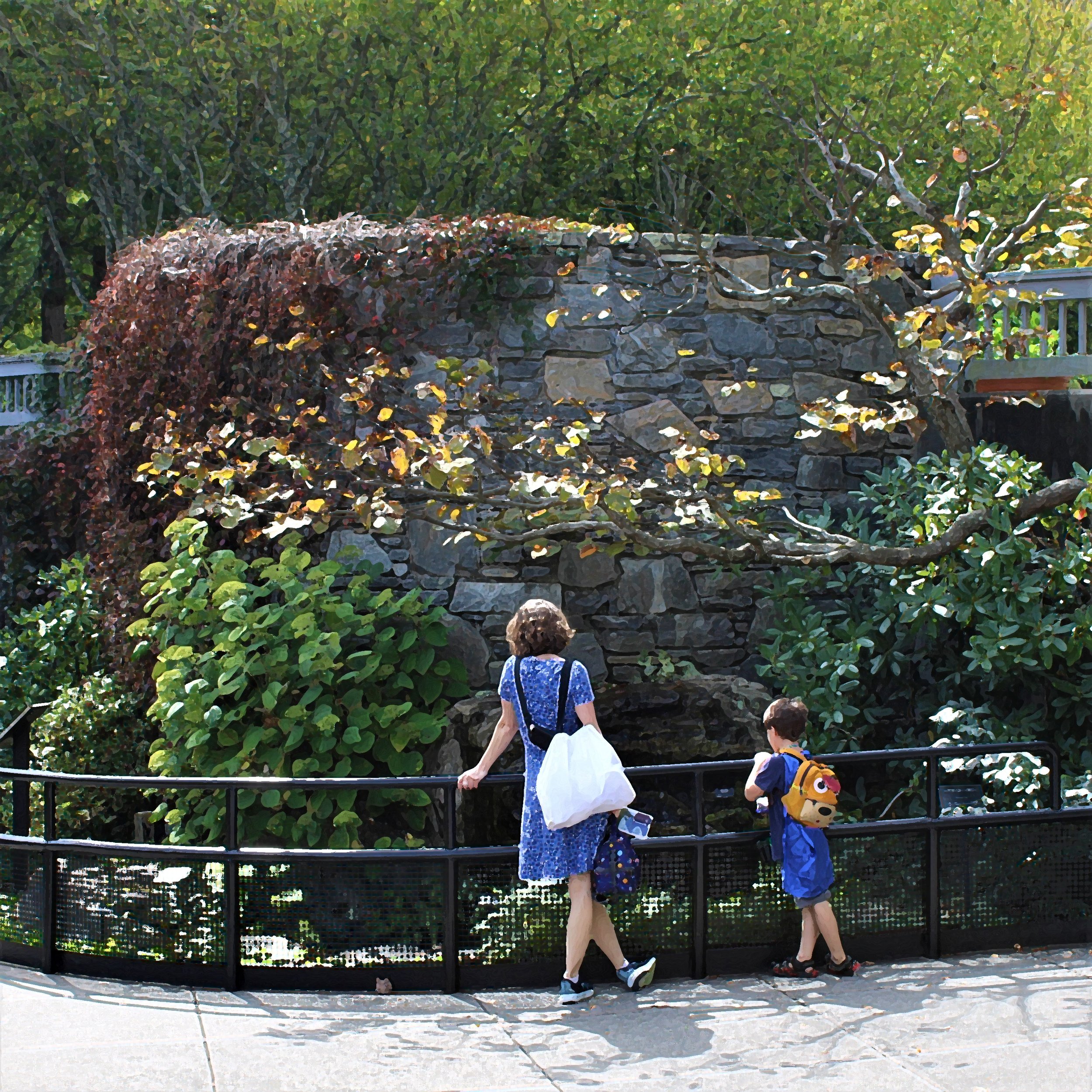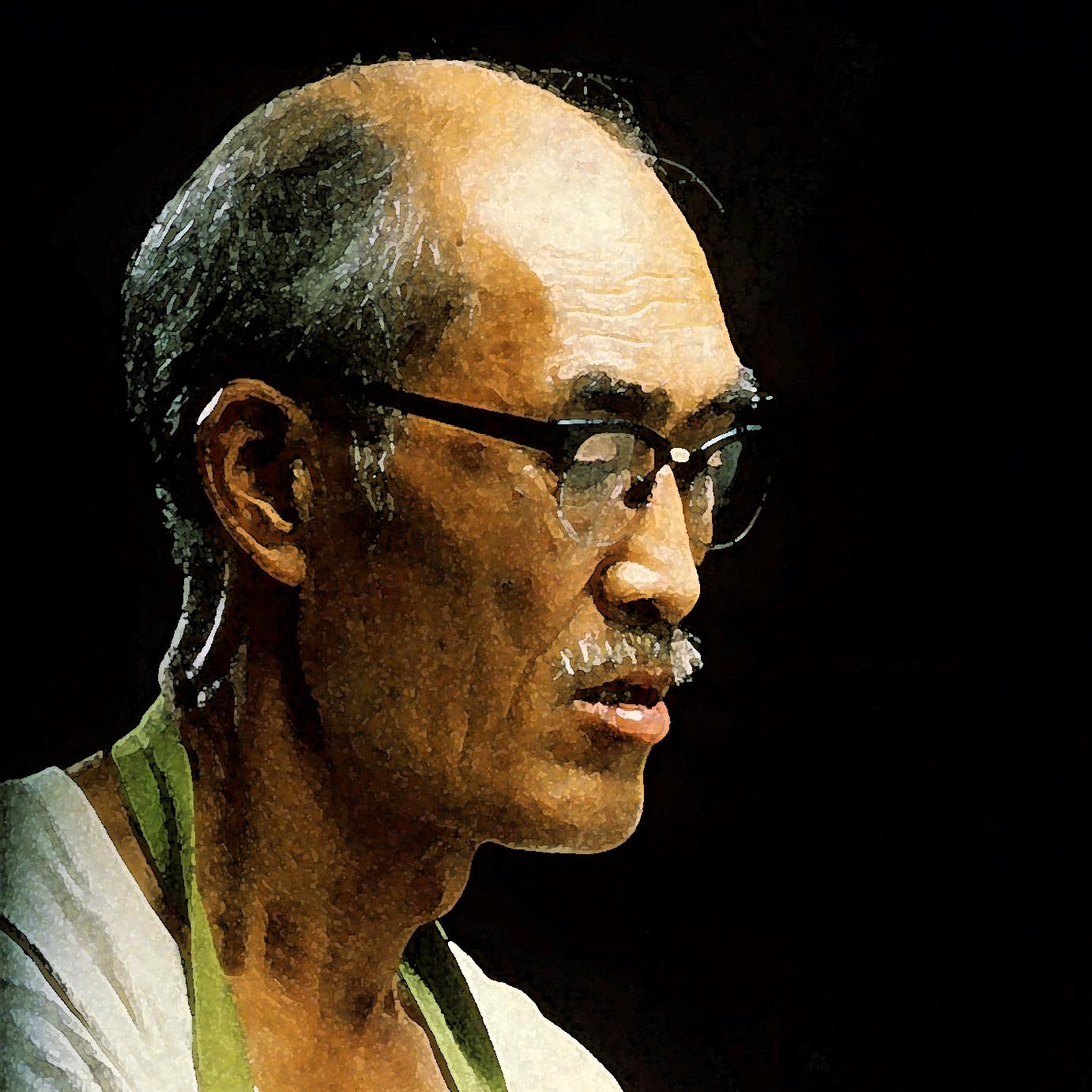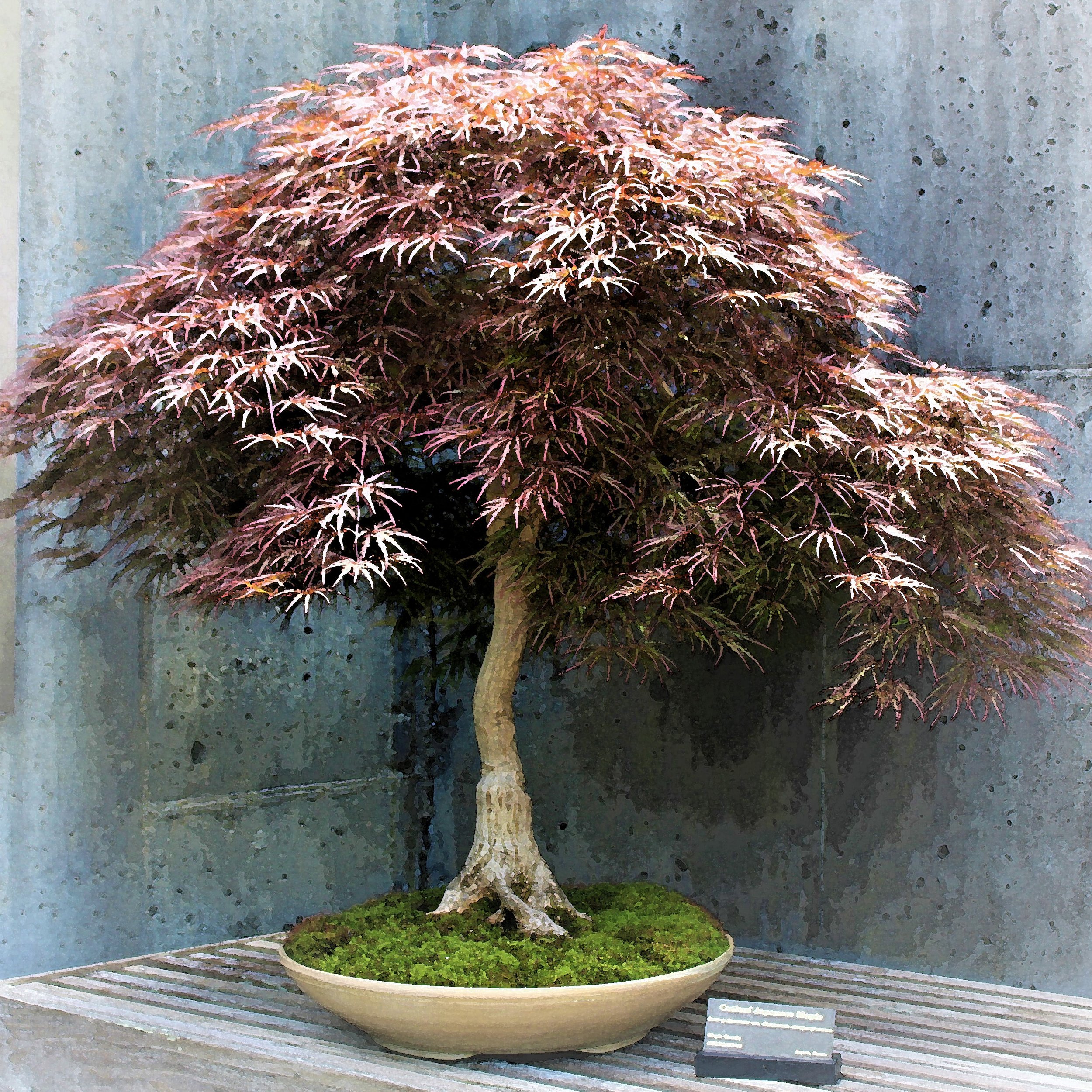In January of 1995 I traveled to Briarcliff Manor, New York, for a three-day study session with Mr. Yuji Yoshimura. Shortly after my return, I wrote an account of the experience and submitted it to Arboretum administration to communicate the value of what I had learned. What follows is an unedited transcript of that report.
Read MoreIn writing about my experience with Mr. Yoshimura, I am looking back over a span of nearly thirty years— long enough ago that some significant changes have occurred in how we live everyday life. Perhaps greatest among them is the revolution wrought by advances in electronic communication.
Read MoreAs the new year began in 1959, thirty-seven-year-old Yuji Yoshimura began teaching bonsai classes at the Brooklyn Botanic Garden. He'd arrived in America laden with all the bonsai materials needed because they would not be otherwise available. This amounted to more than a ton of baggage, and the whole operation must have required prodigious planning and organization.
Read MoreThe time has come for me to talk about Yuji Yoshimura. His name has appeared repeatedly in this Journal, because his influence on me — and, through me, on the Arboretum's bonsai identity — has been profound. But I have not yet told the story of the experiences with him that set my bonsai thinking on such a fateful course.
Read MoreOnce Don designated the bougainvillea as being excess plant material — not worth the trouble — it became valuable to me. I was not trying to prove anything or setting out on a mission to save it, but once the bougainvillea was deemed unworthy that meant nothing I might do to it would mess it up. I could try to make a good bonsai out of the wild bougainvillea just for practice, and if it didn't work out the plant could still go to the compost pile.
Read MoreThose little trees earn their keep at this time of year by providing a leafy green bonsai presence in the Baker greenhouse from December until the middle of May. People appreciate seeing the tropical bonsai looking so vibrantly alive while the temperate world outside, wrapped up in the somber cloak of dormancy, settles into the relative dullness of cold winter.
Read MoreAlthough the growing season is now over for temperate plants in our part of the world, there is at this time a flurry of important work that must be done. The last two months of the year see a reordering of business all across the bonsai front.
Read MoreLet us take one last walk through the garden, down
The path we have strolled so many times before
In earlier days made golden by the alchemy of time.
Read MoreThe beech trees used in this planting were grown from seed at the Arboretum in 1993 as part of the landscape nursery operation. When California bonsai artist Ben Oki visited us in 1996 we gave him some of these very young trees and asked him to make a group arrangement of them.
Read MoreIt might be supposed by people who don't know the backstory that this specimen was given the poetic name The Ogre in reference to the gnarly features of the deadwood, which can be read as a monstrous creature with one small, beady eye glaring out. But really it was named for the person who collected, styled and donated the little tree to our collection: Nick Lenz, the original wild man of American bonsai.
Read MoreWho does not feel something stir within them when they look upon the sight of autumn color in the landscape? What accounts for the melancholy we often feel, contemplating the changing landscape under a gray and cloudy sky, with the smell of wood smoke and a quiet chill carried on the breeze? Why does the past sometimes feel so close in autumn?
Read MoreTo say the herbaceous plantings are accessories or accents or even filler can seem a little dismissive. They have their own merits and can be appreciated for what they are. If we think of bonsai as being a miniature, living expression of the human experience of nature, why should herbaceous plantings not be included? Are they bonsai? The answer to that question depends on whom you ask.
Read MoreA natural tendency toward obstinacy was only one factor in my inability to let go of the maple and put the sorry tale down to experience. While I was fumbling around with all the difficulties caused by the bifurcated root structure, I was having much more success shaping the upper portion of the tree. This maple was one of my earliest efforts at naturalistic styling and I was pleased with its progression.
Read MoreAn acquaintance back in the late 1990s gave me a little red maple (Acer rubrum) in a pint-size pot. It had been grown from a cutting taken from a tree that exhibited outstanding autumn color. Although this very young plant offered absolutely nothing to suggest it would make a good bonsai, I thought I would aim it that way because in those days every plant I came across was a likely candidate for that purpose.
Read MoreThere are times when the growing season feels never-ending, like the pruning and watering and close monitoring of the display trees and the garden landscape will go on forever. Nothing goes on forever, though. Summer is where the action is. Summer is alive and vibrant, demanding and exhausting. This was the thirty-first summer of bonsai at the Arboretum, the eighteenth summer in the bonsai garden. It was a good one, and now it's officially over.
Read MoreBonsai that are very big, or very small, or very old, tend to be the kind of bonsai that attract the most attention. It is their novelty that makes them so appealing. But the fact is that most bonsai do not fit into any of those three categories, and so it should come as no surprise that most of the bonsai in the Arboretum's collection don't fit into those categories either.
Read MoreThere was a lot of experimentation going on in those days. I tried many different techniques as a means of self-education, and some of these efforts succeeded while others failed. Starting new Amur maple bonsai from cuttings was a success. Starting a new Amur maple bonsai from a cut-back stump was a success. Putting these maples together as a group planting was also successful, although there was a hitch in the process that I didn't recognize until later.
Read MoreDana was a true lover of all sorts of plants, but especially bonsai. Even as she reduced her bonsai collection by sending much of it to the Arboretum, she was constantly acquiring new ones because she always had to have bonsai around to look at and tinker with. The trees she brought to my workshops for the club were always interesting subjects, whether for the type of plant or the age and development they exhibited.
Read MoreIn 1994, even as I was working toward the goal of a regional bonsai community with The North Carolina Arboretum at its center, I was trying to accelerate my personal bonsai learning curve. Word reached me early in the year that Yuji Yoshimura was going to be in Charlotte, doing a workshop program for the Bonsai Society of the Carolinas. Ever since meeting Mr. Yoshimura at the convention the year before I had been trying to figure out how to pursue the tantalizing offer of personalized instruction with him.
Read MoreWhen the 1993 World Bonsai Convention in Orlando was over and I returned to work, there was so much to do. It was springtime and our fledgling bonsai collection was leafed out and growing, and now my imagination had been sparked by both the convention experience and the study period in DC before that. My mind was full of big ideas about improving the Arboretum's trees and all the work it was going to take to begin building a program to support them. But it was springtime in the nursery, too.
Read More


















